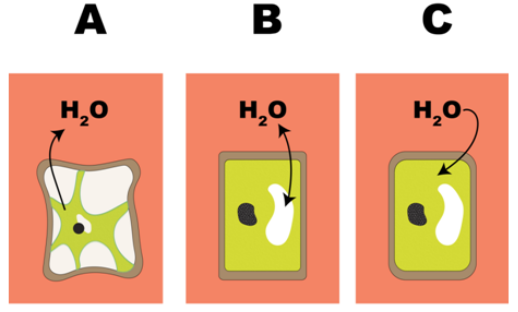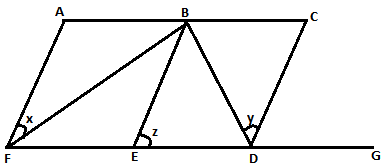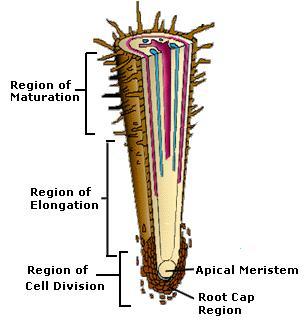12th Grade > Biology
TRANSPORT IN PLANTS MCQs
Total Questions : 74
| Page 4 of 8 pages
Answer: Option C. -> upward movement of water
:
C
The process of transpiration is responsible for the force that pulls water up in a very tall tree. It is responsible for the transpiration pull that causes the ascent of sap.
:
C
The process of transpiration is responsible for the force that pulls water up in a very tall tree. It is responsible for the transpiration pull that causes the ascent of sap.
Answer: Option B. -> False
:
B
Higher the solute concentration, higher the osmotic pressure. Thus, the osmotic pressure is directly proportional to the solute concentration.
:
B
Higher the solute concentration, higher the osmotic pressure. Thus, the osmotic pressure is directly proportional to the solute concentration.
Answer: Option C. -> A- Plasmolysed, B- Normal Cell, C- Turgid
:
C
A plasmolysed cell has a shrunken protoplasm due to excessive water loss and the turgid cell has the cell wall pushed to the maximum due to the pressure from the increased protoplasm. This increase in protoplasm occurs due to the uptake of water from the surroundings.
:
C
A plasmolysed cell has a shrunken protoplasm due to excessive water loss and the turgid cell has the cell wall pushed to the maximum due to the pressure from the increased protoplasm. This increase in protoplasm occurs due to the uptake of water from the surroundings.
Answer: Option C. -> imbibition
:
C
The phenomenon involved here is imbibition. Imbibitionis a special type of diffusion when water is absorbed by solids-colloids causing an enormous increase in volume. Here the Bengal gram seeds swell up imbibing water and the test tube being tightly sealed cause the test tube to break to accommodate the immense increase in volume.
:
C
The phenomenon involved here is imbibition. Imbibitionis a special type of diffusion when water is absorbed by solids-colloids causing an enormous increase in volume. Here the Bengal gram seeds swell up imbibing water and the test tube being tightly sealed cause the test tube to break to accommodate the immense increase in volume.
:
Pressure potential in any cell is created by the water present in the cytoplasm. When the water inside the cell comes out, the pressure on the cell wall becomes zero.
Answer: Option B. -> Movement of solute also will take place from A to B
:
B
Solute cannot move across a semi-permeable membrane unless facilitated through channels or special carrier proteins. Therefore only B is incorrect.
All the other statements are true for osmosis- solvent molecule that is water moves from the region of higher water potential to the region of lower water potential. Osmotic movement is also dependent on pressure gradient.
:
B
Solute cannot move across a semi-permeable membrane unless facilitated through channels or special carrier proteins. Therefore only B is incorrect.
All the other statements are true for osmosis- solvent molecule that is water moves from the region of higher water potential to the region of lower water potential. Osmotic movement is also dependent on pressure gradient.
Answer: Option A. -> pure water
:
A
Water is lost by transpiration in the form of water vapor. Water vapor is almost completely devoid of dissolved salts or solutes, therefore water lost by transpiration is for all practical purposes, pure water.
:
A
Water is lost by transpiration in the form of water vapor. Water vapor is almost completely devoid of dissolved salts or solutes, therefore water lost by transpiration is for all practical purposes, pure water.
:
Due to the presence of sucrose in the sieve tube cells water enters into sieve tube cells and a hydrostatic pressure builds up. At the sink osmotic pressure is reduced as sugars and removed. Hence water flows out of phloem and into the sink, reducing the hydrostatic pressure in the phloem vessel. This gradient in the hydrostatic pressure facilitates the mass movement in the phloem.
Question 40. Identify the correct set of statements related to the movement of substances through vascular tissues.
I. Xylem mainly translocates water, minerals salts and also organic solutes.
II. Phloem mainly translocates a variety of organic solutes and also inorganic solutes.
III. Xylem transports substances from roots to aerial parts of the plants.
IV. Phloem transports substances bidirectionally.
I. Xylem mainly translocates water, minerals salts and also organic solutes.
II. Phloem mainly translocates a variety of organic solutes and also inorganic solutes.
III. Xylem transports substances from roots to aerial parts of the plants.
IV. Phloem transports substances bidirectionally.
Answer: Option D. -> I, II, III & IV
:
D
I, II, III & IV are the correct set of statements related to the movement of substances through vascular tissues.
Xylem transports mainly water, mineral salts, and inorganic solutes from the roots to aerial parts of the plant. Although it was traditionally believed that xylem transported only water and minerals, xylem sap analysis shows the presence of some organic solutes also. Especially elements such as nitrogen, some amount of sulphur and phosphorous are carried as amino acids and related compounds. Similarly phloem too transports inorganic solutes, though they primarily transport sugars and other organic solutes, however here the transport is bi-directionalfrom leaves and storage organs to other parts.
:
D
I, II, III & IV are the correct set of statements related to the movement of substances through vascular tissues.
Xylem transports mainly water, mineral salts, and inorganic solutes from the roots to aerial parts of the plant. Although it was traditionally believed that xylem transported only water and minerals, xylem sap analysis shows the presence of some organic solutes also. Especially elements such as nitrogen, some amount of sulphur and phosphorous are carried as amino acids and related compounds. Similarly phloem too transports inorganic solutes, though they primarily transport sugars and other organic solutes, however here the transport is bi-directionalfrom leaves and storage organs to other parts.



















